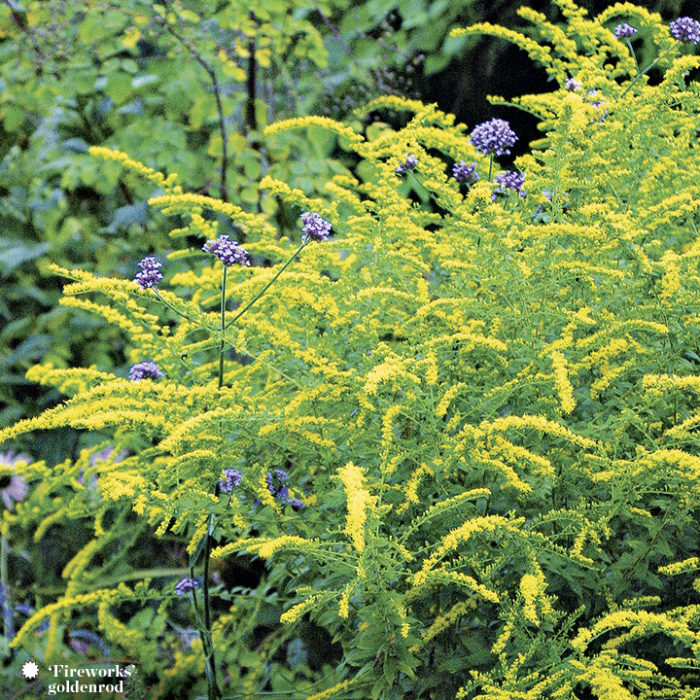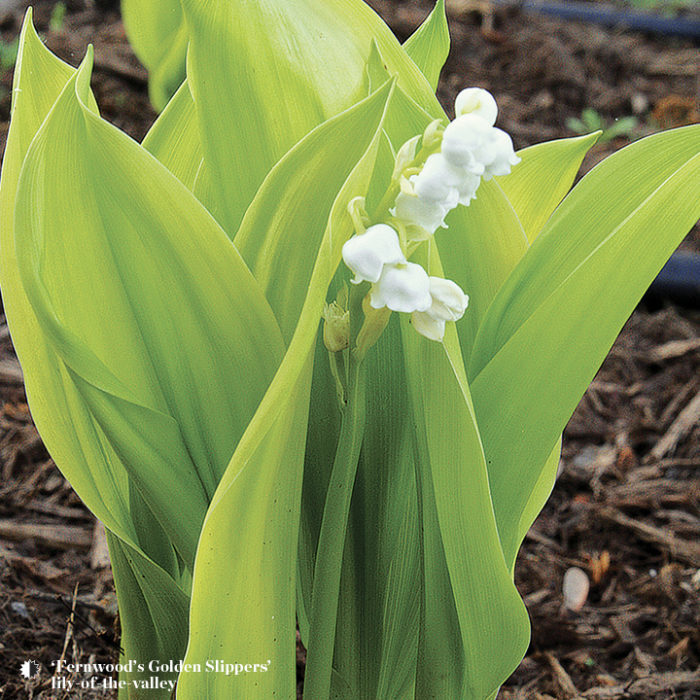Tough-As-Nails Perennials
These beauties will power through a variety of beastly conditions

I find it hard to leave any nursery without at least a few new purchases. I am often enthralled by some hot new perennial with a flashy tag that is full of promise. By the next year, it’s clear if that promise has been kept: There is either a lush, thriving plant, or my hopes are marked by a lonely tag beside dried-up leaves and old, broken stems. Planning a garden with unproven plants is risky business and not for those unwilling to take another hit to their wallet.
Experience has taught me to stack the deck in my favor. Every planting I do is built on a framework of tough-as-nails perennials. These proven and reliable performers may not have new-plant excitement but will grow and thrive year after year, even if the conditions are less than desirable. Many of these are common garden plants that have long thrived with little care, such as daylilies (Hemerocallis spp. and cvs., USDA Hardiness Zones 3–10), peonies (Paeonia spp. and cvs., Zones 3–8), and that frilly party dress of the garden, German bearded iris (Iris germanica, Zones 3–9). I have developed a love for the garden doers that are widely available but have somehow gone under the radar. Here are some of my go-to perennials.
Full sun: Six or more hours of direct sun per day
Partial shade: Not more than four hours of direct sunlight
Full shade: At most, two to three hours of direct sun per day

These sun lovers shrug off a variety of difficult soil conditions
‘Moonshine’ yarrow (Achillea ‘Moonshine’, Zones 3–9) is a classic, long-lived herbaceous plant with woolly gray leaves and butter-yellow flowers in midsummer. Its softly colored blooms are much easier to work into the garden than the brassy yellows of other cultivars, and unlike common yarrow (A. millefolium, Zones 3–9), this selection will not reseed. ‘Moonshine’ will grow 18 to 24 inches tall and wide, with strong flowering stems that require no staking. It will thrive in average to poor well-drained soil. The faded flowers look great if left for winter interest.
Goldenrods (Solidago spp. and cvs., Zones 3–9) get a bad rap for causing hay fever, but they are blameless victims—other plants are responsible for the high pollen count when these are in bloom. These native wildflowers add a splash of needed brightness to the late-summer landscape. A superior selection is ‘Fireworks’ (S. rugosa ‘Fireworks’, Zones 4–9). Tight, 24-inch-wide clumps of dark green foliage give rise to strong, 3-foot-tall stems loaded with bouquets of feathery yellow flowers. ‘Fireworks’ will grow well in nearly any soil with decent drainage, including heavy clay.
The fragrant foliage and long-lasting lavender-blue flowers are reason enough to grow Russian sage (Perovskia atriciplifolia, Zones 4–9), but its ability to tolerate drought conditions makes it a stalwart perennial. A relative newcomer on the market is a compact selection called ‘Little Spire’. Tight, very upright, silvery stems are clothed in gray-green lacy foliage and topped with open sprays of tiny blue-violet flowers. Mature plants will reach about 3 feet tall and 18 inches wide, with a tidier, less sprawling appearance than the typical Russian sage. It will thrive in any well-drained soil.
Many tough-as-nails perennials are passed along from gardener to gardener, and that is how I received my first division of ‘Gerald Darby’ iris (Iris robusta ‘Gerald Darby’, Zones 4–9). In early spring, the new shoots emerge a dark midnight blue, maturing to green. Dark purple 4-foot-tall stems rise above the foliage, topped with violet-purple flowers in late spring. After flowering, the foliage continues to grow into a lush, attractive mound 18 to 30 inches wide. This iris will thrive in wet soils and heavy clay, but will not tolerate dry soil.
Many charming, low-growing selections love partial shade
Finding plants for partial shade can be tricky: too much sun and they will burn; too little and they will not bloom. But European wood anemone (Anemone nemorosa, Zones 5–9) never fails me. This charming low spreader can eventually form an impressive clump 3 feet wide and 6 inches tall, dotted with showy blooms in early to mid-spring. The typical flower is clear lavender-blue, but white and pink selections are available as well as a few choice doubles. The delicately cut foliage sprouts in late winter, then dies away by early summer, making way for the late-season perennials. It is the perfect foil for spring bulbs. European wood anemone adapts to a wide range of soils, including sand and clay, but prefers a well-drained location.
Lily-of-the-valley (Convallaria majalis, Zones 3–8) is a beautiful and fragrant plant, but in its natural form can be a rampaging thug in the garden. I prefer to use the much less aggressive golden-leaved selection, ‘Fernwood’s Golden Slippers’. In early spring, acid-yellow leaves emerge, creating a brilliant glow in the garden. Soon after, the classic, fragrant white flowers dance among the leaves. Allow it to ramble between other later-growing perennials and shrubs. This will protect the golden leaves from burning in areas with very hot summers.
The spidery rose red and white flowers of red epimedium (Epimedium rubrum, Zones 4–8) are charming, but they reach a new level of delight in the improved cultivar ‘Sweetheart’. Vigorous clumps grow about 1 foot tall and 3 to 4 feet wide, and put on a beautiful show in the spring. Copious flowers are followed by lush, heart-shaped leaves edged in dark red. Once established, ‘Sweetheart’ will tolerate a wide range of soils and is completely drought tolerant.
Using tough plants like these gives peace of mind that the perennial beds will always look full, no matter how you may be swayed to try something new.
Distinctive shade lovers brighten the deepest shadows
Of the hundreds of hosta cultivars, my favorite is ‘Sagae’ (Hosta ‘Sagae’, Zones 3–9). When I saw it for the first time, I was consumed with plant lust, and it quickly rose to number one on my want list. The slightly wavy leaves are a cool blue-green edged in butter yellow; deeply impressed veins give it a somewhat corrugated appearance. It will grow 24 to 30 inches tall and 4 feet wide with an upright mounded habit. It has excellent substance, that elusive quality that hosta lovers seek, and has shown resistance (but not immunity) to slug and snail damage.
The eastern U.S. native baneberry (Actaea pachypoda, Zones 3–8), commonly called doll’s eyes, grows 3 feet tall and wide and is a great addition to the late summer garden. The dark green leaves are topped with clusters of pure white berries on bright red stems. These long-lasting berries are quite poisonous but are so bitter that even most wildlife will avoid eating them.
Few perennials are more unusual than the hardy begonia (Begonia grandis, Zones 6–9). It is slow to emerge in spring but grows quickly in the summer heat with large dark green, oval-shaped leaves often marked with burgundy on the undersides. The stems will grow 2 to 3 feet tall with clusters of hanging pink blooms from midsummer to the early days of autumn.
Using tough plants like these gives peace of mind that the perennial beds will always look full, no matter how you may be swayed to try something new.
What makes a tough-as-nails perennial?
When looking for tough-as-nails perennials, I keep a list of criteria in mind. First, I consider the basics.
- The plant should be cold hardy and heat tolerant for your area. In difficult or exposed sites, I look for plants with hardiness ratings at least one zone lower than typical.
- Look for long-lived perennials. The best choices will live five years or more without needing to be divided or replaced.
- Disease and pest resistance are worth researching. Talk with other gardeners or local master gardeners about possible problems.
Second, consider maintenance. The best tough-as-nails perennials require minimal care with no special treatments.
- Some degree of drought tolerance is essential. Once established, these performers should not need to be watered more than once every two to three weeks.
- The very best choices will look great with almost no input from you. The plants should tolerate a wide range of soil types and conditions, require no pinching or staking, and look good even when they aren’t flowering.
Richie Steffen is curator at the Elisabeth C. Miller Botanical Garden in Seattle.
Photos: Doreen Wynja; courtesy of Plant Delights Nursery Inc.; Jennifer Benner; Joshua McCullough; Nancy J. Ondra; and Stephanie Fagan.
Sources
- Bluestone Perennials, Madison, Ohio; 800-852-5243; bluestoneperennials.com
- Klehm’s Song Sparrow Farm and Nursery, Avalon, Wis.; 608-883-2356; songsparrow.com
- Plant Delights Nursery, Raleigh, N.C.; 919-772-4794; plantdelights.com
















Comments
Useful article. I didn't see a mention of goldenrod as an amazing pollinator attractor (and I think tansy is as well, but have no personal experience). A couple of late summers ago, I was visiting Lum's Pond State Park in Delaware, and spent about 45 minutes taking pictures of pollinators (bees, wasps, etc) on the native goldenrod that was blooming. I'm hoping that the cultivars are as attractive.
Log in or create an account to post a comment.
Sign up Log in